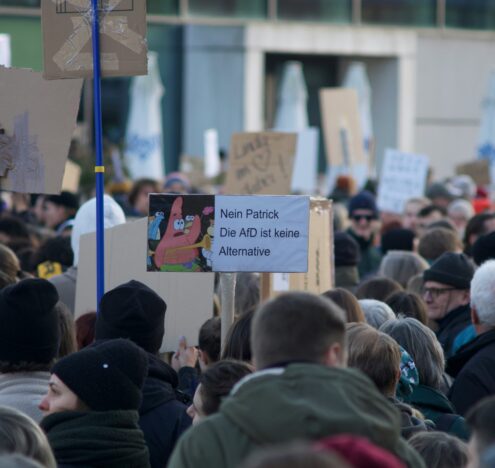This analysis was featured in Critical State, a weekly newsletter from Inkstick Media and The World. Subscribe here.
When soldiers return from war, they do so changed by the experience, while integrating with home communities that changed in different ways in their absence. It’s a trope of military memoir, fiction, and often public testimony: that the soldier left to fight for one country and came back to one in some way unrecognizable and, often, worse. One of those differences, too, is the loss of comrades in arms, of fellow soldiers who left and never came back. In communities that especially feel the brunt of war, from lost family to returned, changed veterans, the experience of loss during wartime can be a catalyst of reactionary sentiment.
Such is the contention of Richard J. McAlexander, Michael A. Rubin, and Rob Williams in their working paper, “They’re Still There, He’s All Gone: American Fatalities in Foreign Wars and Right-Wing Radicalization at Home.”
In communities that especially feel the brunt of war, from lost family to returned, changed veterans, the experience of loss during wartime can be a catalyst of reactionary sentiment.
“We agree that both economic anxiety and racial resentment explanations are important for understanding right-wing radicalization, but highlight a third factor missing from this debate: the impact of US foreign military engagements on politics and society at home,” write the authors. “We argue that communities that bear the costs of these wars, specifically in terms of fatalities among community members, may be more prone to high rates of radicalization.”
To build evidence for this, the researchers looked at publicly available posts on Parler, an online Twitter-like platform specifically seen as a home for right-wing mobilization. Parler video posts were geo-located, making it easy to match hometowns and travel for users.
“Efforts to measure early stages of radicalization systematically typically face major barriers: extremist organizations remain clandestine, individuals may be wary of revealing their participation, and, unlike violent incidents, the mundane forms of social and political action that mark the early stages of radicalization are not widely investigated or reported on by law enforcement, government agencies, or the media,” the authors write. “The Parler data provide a unique opportunity to capture the early stages of far-right radicalization for systematic empirical investigation.”
With such mobilization done in the open, it became possible to determine the hometowns of Parler users down to county and census tract levels, or smaller neighborhood-sized regions studied by the US census. Then, the researchers compared that to US war fatalities from Iraq and Afghanistan since 2003. Looking especially at the videos users uploaded of themselves, the researchers found that, the more war fatalities in a user’s hometown, the more likely they were to post a video on a reactionary site. Because it is harder for users to hide behind anonymity in videos, the researchers treat a willingness to post a video on Parler as evidence of deeper engagement in the site.
“Our statistical results show a strong correlation between areas in the US whose residents have died in overseas wars and the level of participation in a far-right social media website,” write the authors. “This is a remarkably robust result that holds even when controlling for military participation. It is not participation in the military that leads to far-right radicalization, it is specifically the harmful domestic repercussions of foreign military interventions that lead to far-right radicalization in the United States.”
Understanding how these long wars shape radicalization, and in turn diminish the possibilities for domestic politics, is a vital component to understanding danger at home, and the follow-on consequences of sending armies crusading abroad.




















